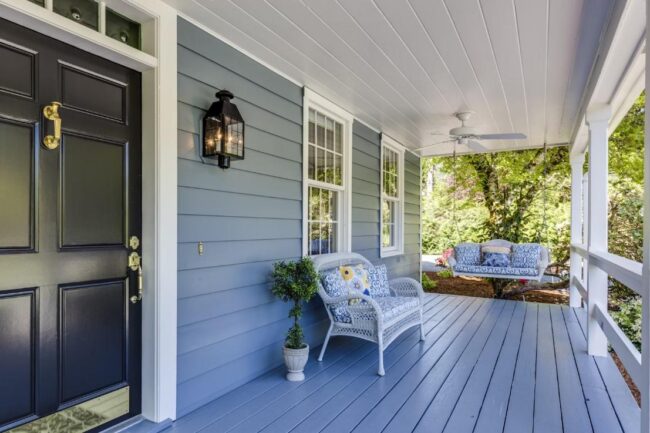
If your home needs a refresh, the outside is the ideal place to start. After all, the facade is the first thing anyone sees and it’s what makes the first impression. A fresh coat of paint can be a great help, but if you want your home to look truly modern, it will take more than just surface changes. Things have to stay clean, simple, in tone with the structure of your home, but still updated.
Modern design is all about balance. That means straight lines, neutral colors, and a mix of materials like wood, metal, and glass. Some would say cold, but if it looks cold, you’re not doing it right; we’re going for sleek. Minimal, but still welcoming, you know?
Let’s see what you’ll need to think about before you give a makeover to the outside of your house.
Factors You Should Consider
Before you even think of your house, think about who’s going to do all this work. Unless you’re a professional or are extremely (extremely!) handy, you’ll want to hire an exterior remodeling contractor.
Once that is done, here’s what else to consider.
Architectural Consistency
A stylish trend might look perfect online, but it won’t work if it doesn’t match the shape and structure of your home. One of the biggest mistakes people make is forcing modern design onto a house that doesn’t suit it.
For instance, you can’t add sleek metal panels and sharp angles to a classic cottage unless you want your house to look like it’s had a stroke. Look for updates that bring a modern feel, but don’t clash with your home’s original character.
Minimalist Looks
Modern design is often minimalistic, but that doesn’t mean boring and without character. The goal is to keep things clean and uncluttered, with simple shapes and details. You’ll often see flat or low-slope roofs, smooth walls, flush garage doors, and frameless windows. It’s all about removing visual noise and letting the structure speak for itself.
Instead of decorative trim or bold patterns, you’ll see proportion, alignment, and clean edges on modern homes. If it’s done right, the result is a home that feels calm, elegant, and timeless.
Neutral and Monochromatic Colors
Color is important in how your home feels overall. Modern facades are usually neutral (white, charcoal, taupe, black, etc.) because these types of colors create a clean, sophisticated look that’s easy to maintain and doesn’t age quickly.
If you’re worried about your home blending in too much, contrast can help. For example, you could pair a dark trim with lighter walls, or add windows with black frames to make a statement.
Also, take the surroundings into account. Look at the homes near you, natural light, and landscaping to pick a color palette.
Mixed Materials and Textures
One of the most noticeable features in a modern home is the combination of different materials. If you mix wood, steel, glass, fiber cement, and stone, your facade will have depth and character. It will also give you the flexibility to highlight different parts of the exterior. For instance, why not use vertical wood accents near the entryway, a concrete base along the bottom, and smooth fiber cement panels across the main wall?
Stick to matte finishes and natural textures where you can because they make the design feel grounded and high-quality.
Energy-Efficient Windows and Doors
Large windows are a big part of modern design because they let in natural light and offer clean, uninterrupted views. But this isn’t just an aesthetic choice – it also improves energy efficiency if you choose the right materials.
Look for double- or triple-pane glass, low-e coatings, and well-insulated frames. Black aluminum or steel frames are very popular because they’re durable and look sleek. Of course, doors are important, too.
Think about a smooth, flush door design, maybe with a single sidelight or a pivot opening. This’ll make your entryway feel bold, but minimal.
Lighting
Lighting isn’t just to help you see at night, it also shapes how your home looks and feels after dark. Modern trends tend to go for subtle, built-in lighting, like recessed soffit lights or slim wall-mounted LEDs.
You can also use path lights to guide guests to the front door or to put focus on key features, like a tree or a textured wall. Smart lighting systems can help you automate all this, plus they’ll let you adjust the brightness.
Conclusion
Your home has an outfit, and it’s called the facade. It should fit well, match the setting, and say something about the people living inside. Kind of like what you want to achieve with your clothes!
And just like with clothes, details play a big part, so clean lines, quality materials, and a good color palette all go a long way.
